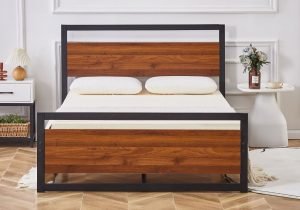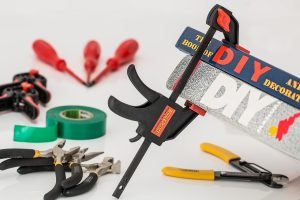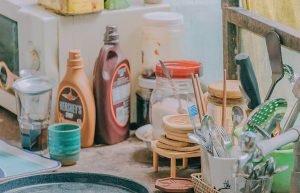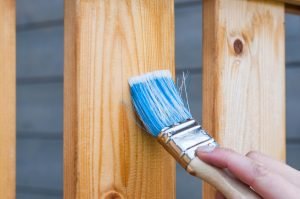Last Updated on November 22, 2024 by teamobn
I’m not a jigsaw fan. I just don’t have the patience to find all the border pieces. But a puzzle coffee table? Yep – I’m up for it.
There is something special about a jigsaw puzzle. The beauty of a jigsaw puzzle is that it can be enjoyed by people of all ages. It is a great way to spend time with family and friends, and it can be a challenging and rewarding experience.
Jigsaw puzzles can be a fun and educational activity. They can help to develop problem-solving skills and spatial awareness. Jigsaw puzzles can also be a relaxing and therapeutic activity. 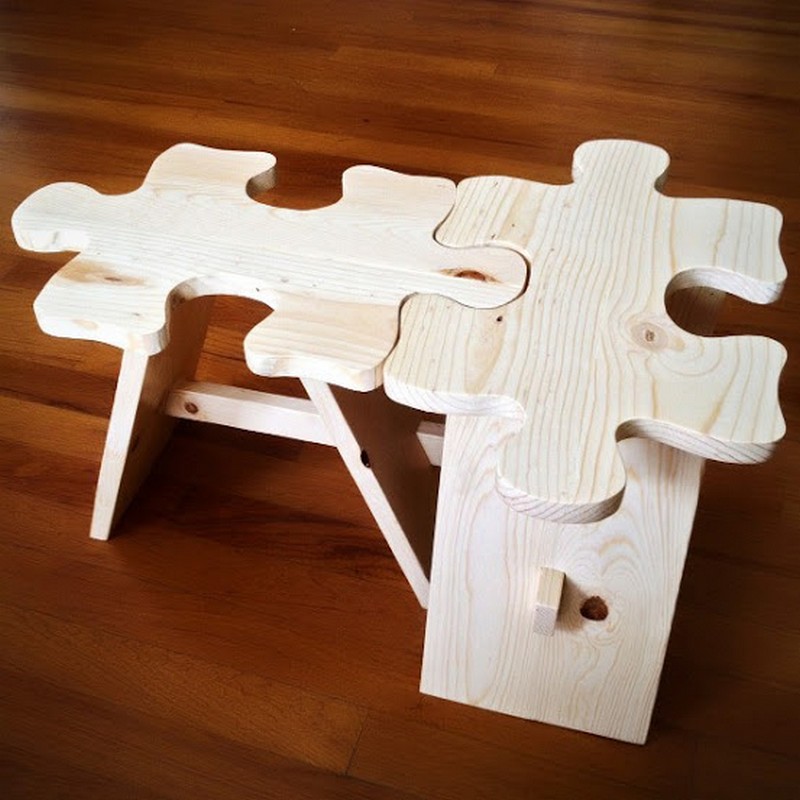
There are many different types of jigsaw puzzles, from simple to complex. There is sure to be a jigsaw puzzle that is perfect for you.
A Puzzle Coffee Table
A coffee table can provide a spot to place your drink as you relax. It also gives guests a surface to rest their feet. But besides practicality, a coffee table can inject personality into your living room. It can serve as a unique statement piece, and it definitely adds a textural element to your home.
Do you ever find yourself getting bored of your coffee table? Sure, it serves its purpose as a place to put your drinks and maybe a few books or magazines, but sometimes it just feels like something is missing. 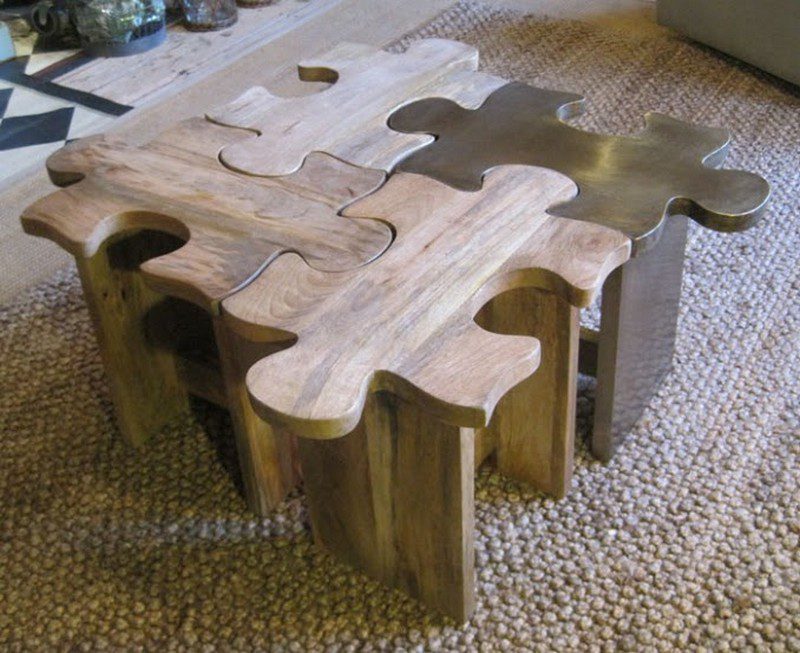
If you’re looking for a way to spice up your coffee table, why not try a jigsaw puzzle coffee table? A jigsaw puzzle coffee table is a great way to add a bit of style and personality to your living space.
Not only are they unique and eye-catching, but they’re also a great conversation starter. And, if you’re the type of person who loves puzzles, then you’ll definitely enjoy having one of these tables in your home.
With jigsaw coffee tables, you can easily create unique and one-of-a-kind pieces that will add personality and character to your space.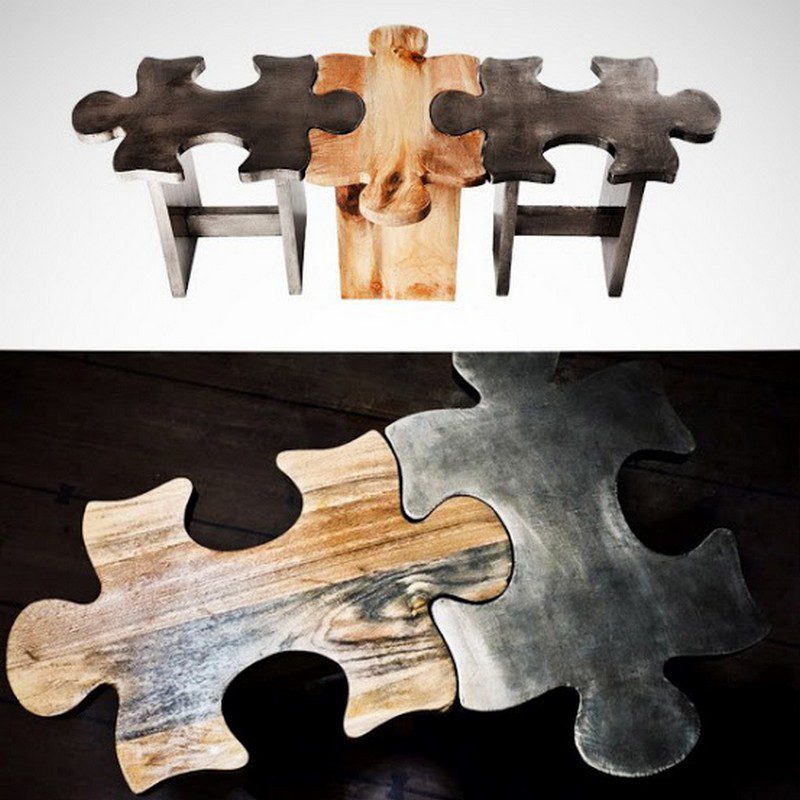
This jigsaw coffee table is composed of pieces that can be used as stools. This allows for more versatility and function in smaller spaces. The coffee table can be easily reconfigured to accommodate different needs.
For example, if you need extra seating for guests, simply use the jigsaw pieces as stools. Or, if you need more surface area, you can reconfigure the pieces to create a larger coffee table. This coffee table is a great option for those who want furniture that is both versatile and stylish.
This Jigsaw coffee table is made from high-quality woods. You have the option to stain the wood to match your home’s décor or keep it in its natural state for a more rustic look. This coffee table is sure to become a staple piece in your living room.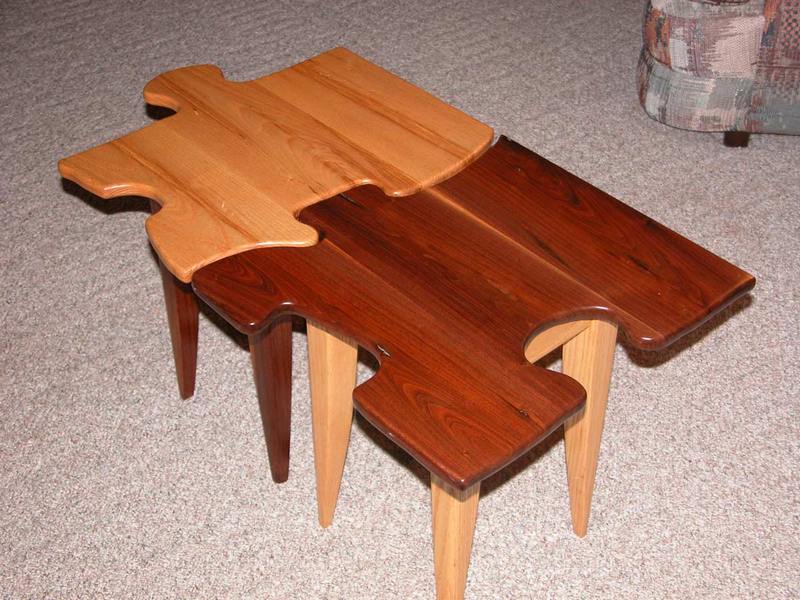
This Jigsaw coffee table is usually made of 4 pieces of the puzzle that can be expanded depending on your preferences. The table is perfect for those who want a stylish and modern coffee table that is also unique and different.
The table is made of high-quality materials and is built to last. The table is also easy to expand and can be customized to your liking.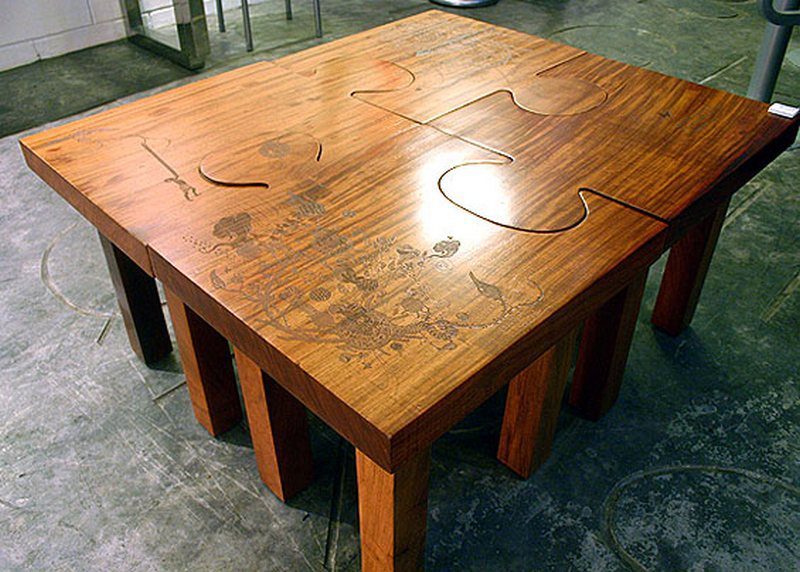
Furniture can truly make or break a home. Having a piece of furniture that is both stylish and unique can really give your home the “wow” factor. Home furnishings, like everything else, just seem to be getting more expensive.
Would you like to have this Jigsaw Coffee Table?
Building a Jigsaw Puzzle Coffee Table
Building a puzzle coffee table is a rewarding project that combines function and creativity. Follow these detailed steps to create your own table.
Step 1: Installing the Bottom Shelf
- Prepare Bottom Supports: Cut 2″ wide plywood strips and connect them between the legs using pocket holes and screws. These should be set flush about 2″ from the bottom inside of each leg.
- Cut the Bottom Panel: Trim a plywood panel slightly smaller than the base to fit inset with approximately a ¼” gap on all sides. Notch out each corner to fit around the legs using a jig saw, ensuring precise cuts.
- Enhance Edges: Apply edge banding to the long exposed edges for a finished appearance.
- Fit and Secure: Test fit the panel, then glue it onto the bottom supports and clamp it to dry.
Step 2: Installing the Top Supports
- Cut Top Supports: Use ¾” plywood to make the top supports. Remember, the front piece should be shorter to accommodate a drawer later.
- Attach Supports: Drill pocket holes in the ends of the supports and attach at the top of the legs, keeping them flush on the inside.
Step 3: Attaching the Puzzle Table Top
- Cut the Table Top: Begin with a ¾” plywood panel, then divide it into four sections; the outer two are fixed to the base, while the middle two will open to access the puzzle compartment.
- Install Hinges: Use hinges to connect the middle pieces with the outer ones. Cabinet butt hinges work well, though you can use piano hinges for a tighter gap.
- Edge Finishing: Apply edge banding to the top sections, avoiding areas with hinges to help align with gaps.
- Secure the Top: Align and attach the sections using pocket holes on the stationary outer parts, ensuring they remain flat and functional.
Step 4: Installing the Puzzle Compartment Panel
- Cut and Fit Panel: Trim a ¾” plywood panel to sit snugly between the top supports as the base of your puzzle compartment.
- Secure the Panel: Drill pocket holes around its edges and attach it, ensuring it’s flush with the top supports. This panel serves as the puzzle and hidden storage area.
Step 5: Installing the Drawer
- Assemble the Drawer Box: Use ¾” plywood for the sides and ¼” plywood for the bottom. Assemble with pocket holes and screws, then attach the bottom with glue and nails.
- Install Drawer Slides: Attach 20″ ball bearing slides inside the table frame, slightly inset from the front.
- Fit the Drawer: Mount the drawer onto these slides, adding a ¾” plywood front for a finished look.
- Detailing: Decorate with 1×2 strips along the front bottom and back top support to enhance the design.
Step 6: Finishing Touches
- Sanding and Staining: Finish the table with thorough sanding, followed by a stain and protective polyurethane coat.
- Add Hardware: Attach drawer pulls to the drawer fronts for easy access and added style.
For additional visual guides and decorative tips, consider looking up related tutorials or videos online to customize your project further. Once completed, your puzzle coffee table will be a stylish and functional centerpiece for your home!
Click on any image to start the lightbox display. Use your Esc key to close the lightbox. You can also view the images as a slideshow if you prefer 😎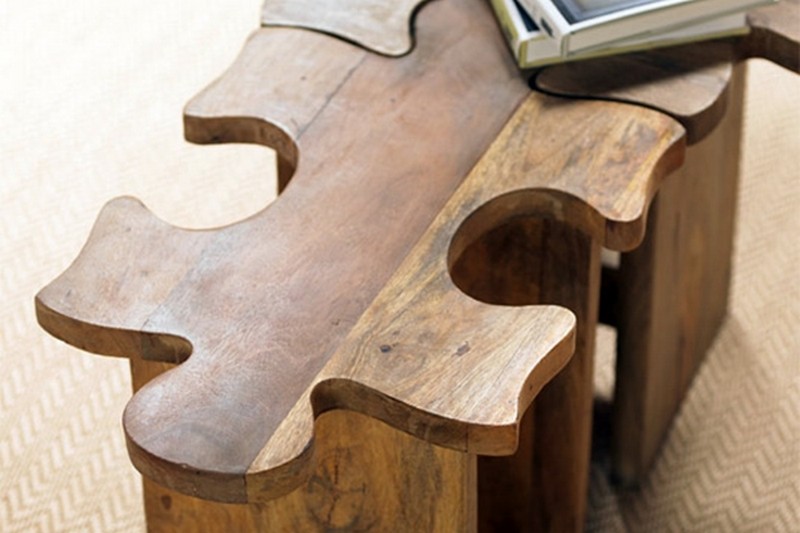
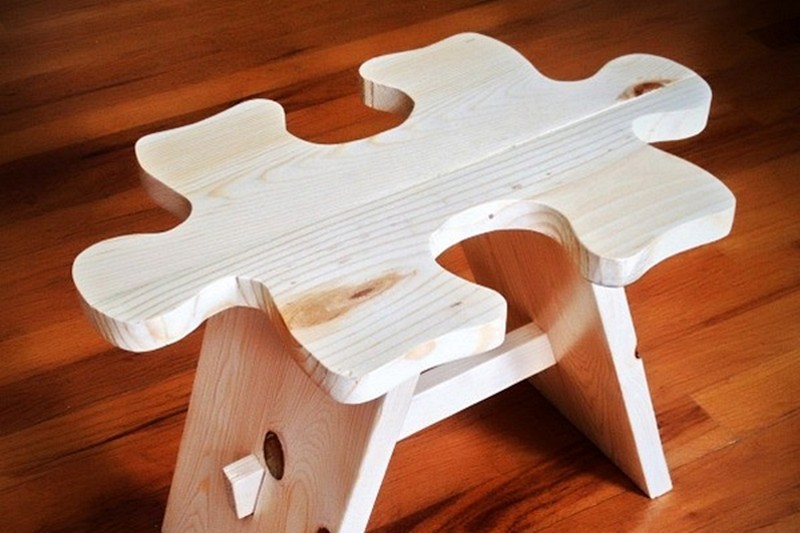
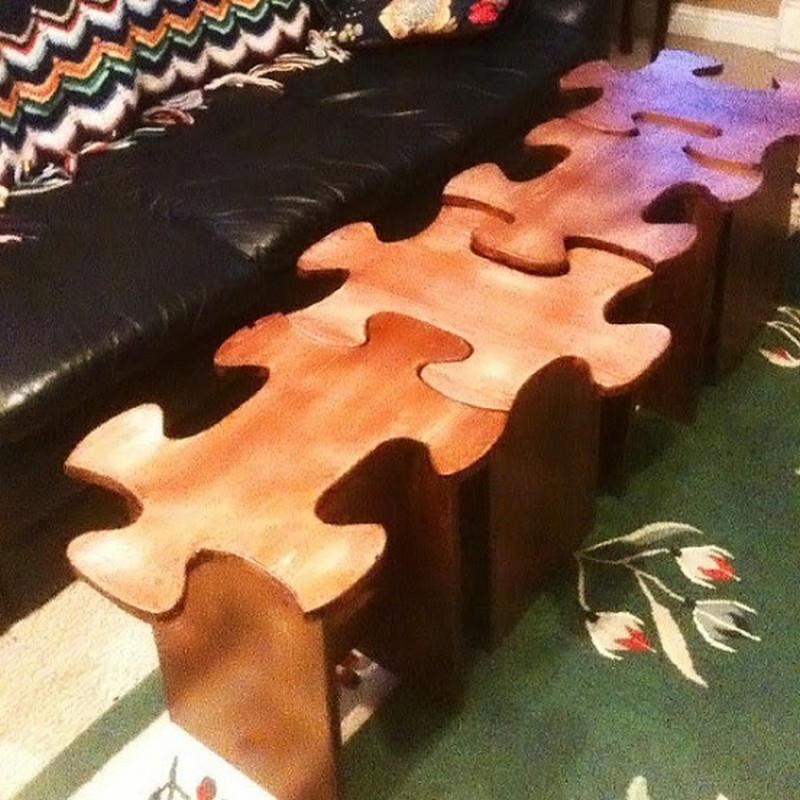

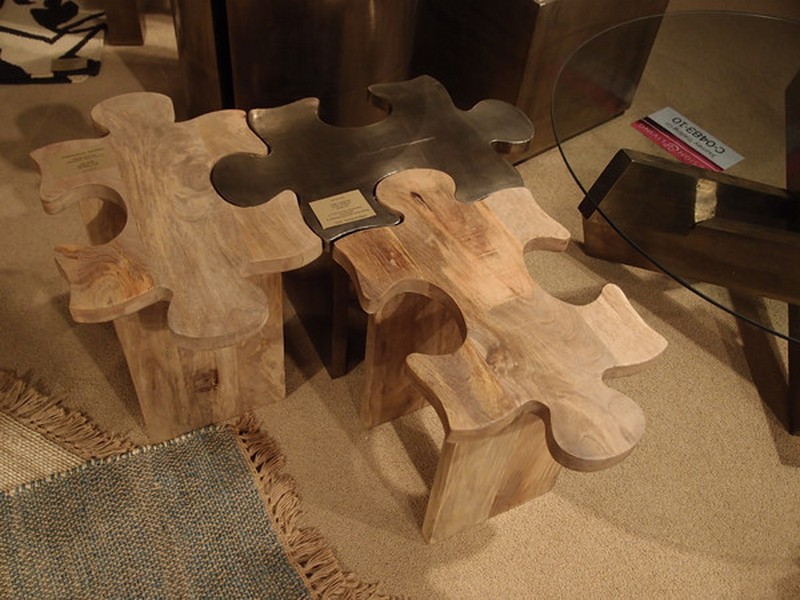





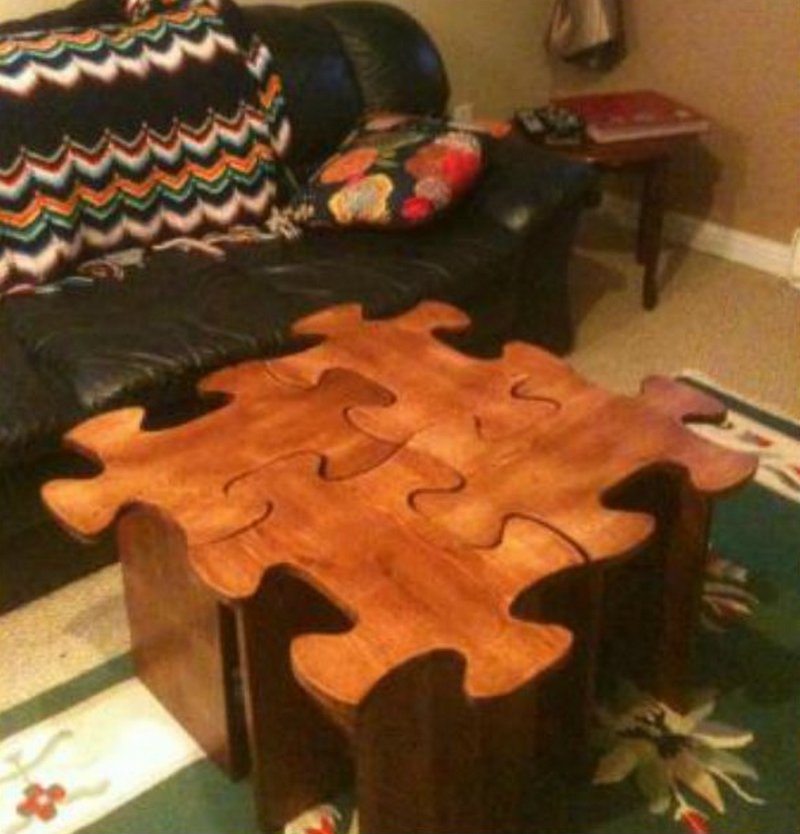
Installing the Puzzle Compartment Panel
To install the puzzle compartment panel, start by preparing a ¾-inch plywood panel. This panel should be precisely cut to fit snugly in the opening created by the top supports. Make sure to drill ¾-inch pocket holes around the perimeter of the panel.
- Prepare the Panel: Measure and cut the plywood to match the dimensions between the top supports of your table base.
- Drill Pocket Holes: Use a pocket hole jig to drill ¾-inch pocket holes along the edges of the panel, ensuring even spacing for secure attachment.
- Position the Panel: Carefully insert the panel into the table base. Align it so the bottom edge is flush with the bottom of the front top support.
- Secure the Panel: Use pocket hole screws to firmly attach the panel, ensuring stability. Double-check that the panel is level and secure.
This part of the table is visible when you open the tabletop. It’s perfect for working on puzzles, playing board games, or discreetly storing items like remotes and books.
Key Considerations Before Building a Puzzle Coffee Table
Building a puzzle coffee table is a rewarding project, especially if you have some experience with woodworking. Here are the essential points to consider before you begin:
Material Choices
- Plywood Selection: This design relies heavily on plywood, with birch being a popular choice due to its smooth finish and durability. However, you can opt for maple, oak, or any high-quality, cabinet-grade plywood. Each offers a unique grain pattern and strength.
- Additional Materials: Besides plywood, you’ll need solid wood for the legs and a few trim pieces. Choose materials that complement your plywood selection for a cohesive look.
Complexity Level
- Intermediate Project: This project is classified as intermediate. While it’s not overly complex, it does involve multiple components that require careful measurement and assembly.
- Preparation and Planning: Detailed planning is crucial. Ensure all measurements are accurate and understand each step to prevent errors during assembly.
Assembly Tips
- Building Sequence: A key learning from previous builds is to adjust the assembly order. It’s recommended to install the bottom supports and shelf first. Completing the top supports afterward can help avoid complications.
By understanding these considerations, you’re better prepared to tackle the construction of a puzzle coffee table with confidence and creativity.
Conclusion
The Impressive puzzle coffee table is a work of art and utility. Its unusual design, flip-top portions, integrated games, and changeable storage give unlimited ways to enhance your living area. Whether you’re a beginner or an expert carpenter, you can enjoy elegance, usefulness, and hands-on workmanship while making this coffee table.
You can further enhance your living room with many of our useful projects. Check out our living room budget renovation guide!
FAQ: Puzzle Coffee Table
How can I build a hidden puzzle coffee table with a storage drawer and open shelving?
Creating a hidden puzzle coffee table with storage and open shelf is creative and useful. The durable plywood and hardwood table has flip tops for board games, a storage drawer, and open shelf. Follow these steps: Build the bottom shelf with 2×2 legs and plywood supports, the top with flip parts for storage, a drawer with slides, then sand, stain, and protect for a polished effect.
How do you install a drawer into the coffee table?
Building a robust box and effortlessly integrating it into your coffee table is required to install a drawer. Build using ¾″ plywood for sides and ¼″ plywood for the bottom, avoiding dadoes for space. Secure with pocket holes, glue, and nails. Put 20″ ball-bearing slides 1 ½” from the front legs, mount the drawer, and fasten a clean front panel from the interior. Add 1×2 trim for a finished look.
How do you attach the puzzle table top?
Before attaching the puzzle table top, cut a ¾” plywood piece to 26 ½” x 48″ and divide it into four parts: two outside portions for table attachment and two middle sections for flip-top lids. Connect parts with cabinet butt or piano hinges, recessing them with a router to reduce gaps. To provide a polished finish, apply edge banding to plywood edges, fasten outside portions with ¾” pocket holes and screws, and align flip-top sections for smooth operation.
How do you install the top supports on the puzzle coffee table?
To build the puzzle coffee table top supports, cut ¾” plywood to the dimensions specified in your plans. Make sure the front support is around 3″ tall, half the height of the rear support, to accommodate a drawer. For sturdy joints, drill holes at both ends of each support with a pocket hole jig. Place supports on top of table legs, secure with 1⼄ pocket hole screws, and flush with inner edges for stability and a polished look.
How do you install the bottom shelf of the puzzle coffee table?
Steps to install the puzzle coffee table bottom shelf: Attach 2″ wide plywood strips between 2×2 leg posts using pocket holes and screws, positioning them 2″ up from the base. Cut a plywood panel slightly smaller than the framework, cut the leg corners using a fine-finish jig saw, and edge band the exposed edges for a polished effect. For a smooth, secure installation, test fit the panel, apply wood glue along the supports, position it, and clamp it while the glue cures.
How do you install the hinges on the puzzle coffee table?
Secure the puzzle coffee table’s stationary outer components to the base and attach the moving middle portions using cabinet butt hinges. Use a router to cut small recesses (⅛ inch deep) on stationary components to reduce the ¼-inch gap with hinges for a cleaner look. Align the hinges, screw them in, and test the flipping mechanism for smooth movement and consistent gaps for a polished finish.
What are the dimensions of the puzzle coffee table?
The puzzle coffee table measures 19 ¾ inches in height, making it a comfortable option for everyday use. Its depth is 26 ½ inches, providing ample surface space without feeling oversized. At 48 inches wide, it serves as a functional and stylish centerpiece for a variety of living room layouts.

